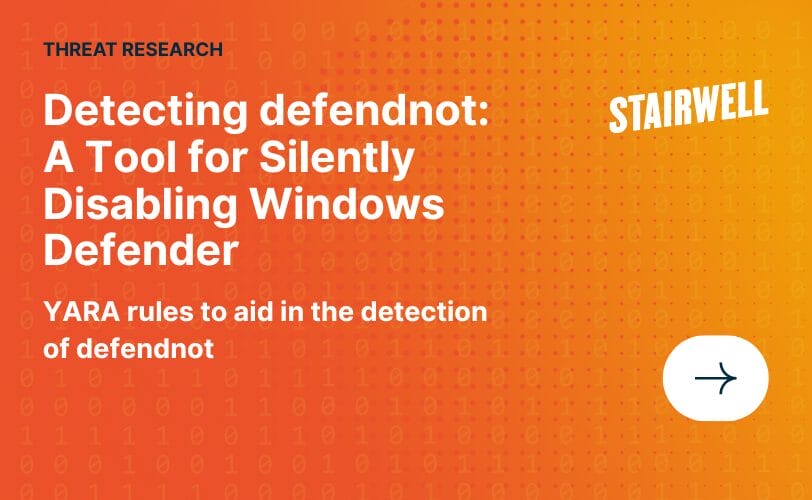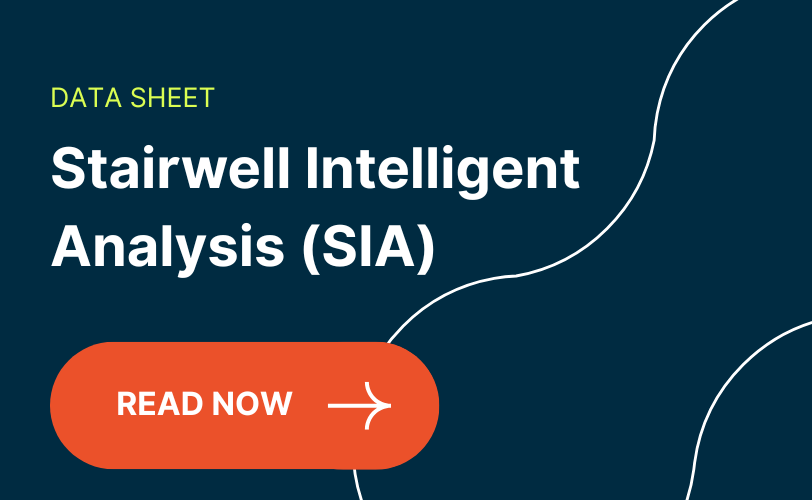Stairwell goes beyond the limits of EDR
Endpoint Detection and Response (EDR) platforms have become a cornerstone in the cybersecurity suite of most organizations – and for good reason. When implemented correctly, EDR acts as a robust shield, thwarting a significant portion of well-known threats posed by adversaries seeking unauthorized access and data theft. However, it’s crucial to acknowledge the inherent limits of EDR.
While EDR is a formidable tool, it’s not a silver bullet nor an all-encompassing solution that organizations might hope for. This is evidenced by the recent report from Malwarebytes where over 1,900 successful ransomware attacks have taken place between June 2022 and June 2023 in just 4 countries alone – the US being the top – despite organizations’ attempts to try and prevent them. Undoubtedly, it excels in defending against and mitigating known threats, but there are clear limits to EDR’s capabilities, and there are valid reasons why EDR, in isolation, grapples with safeguarding your organization from unforeseen or advanced attacks.
Limits of EDR:
- Device and environment limitations: EDR solutions may not readily protect devices or environments such as storage devices, web applications, firewalls, or operational technology (OT) environments.
- Platform dependency: EDR tools are constrained to operate only on platforms where the agent is officially supported.
- Resource-intensive agents: EDR agents can demand substantial system resources, potentially causing disruption for end-users due to their intrusive nature.
- Known threat focus: EDR primarily addresses known threats, leaving a significant gap in protection against zero-day threats and emerging malware variants, often categorized as “unknown threats.”
- Limited data collection: EDR tools gather and process a restricted amount of data, resulting in limited capabilities for in-depth analysis and forensic investigations.
- Short retention periods: EDR tools typically offer limited data retention, often capping at 30-60 days. This limitation hampers continuous analysis, threat hunting, and effective response, necessitating supplementary technologies like a SIEM for long-term alert and event storage.
- Evasion by sophisticated attackers: Advanced attackers can test their malware against EDR providers, potentially evading detection and undermining the efficacy of EDR as a standalone defense mechanism.
- Costly deployment and management: The deployment and ongoing management of EDR solutions can incur substantial expenses, particularly for organizations with budget constraints.
Recognizing the challenges and boundaries that modern security teams encounter with EDR, Stairwell steps in as your solution. Stairwell extends beyond the limits of EDR, offering an added layer of confidence in safeguarding your organization. It excels in identifying and thwarting even the most advanced cyber threats, ensuring comprehensive protection.
How Stairwell goes beyond the limits of EDR:
- Cutting-edge binary analysis: Our platform offers advanced binary-level analysis coupled with built-in variant detection.
- Versatile endpoint compatibility: Stairwell goes beyond common endpoint operating systems like Windows, Mac, and Linux, also functioning effectively in environments where EDR solutions typically cannot, including network and security appliances as well as OT environments.
- Minimal endpoint impact: Stairwell minimizes impact on endpoints by conducting all analysis within your private cloud instance.
- Swift threat detection: Whether in the present or unearthed from the past, Stairwell rapidly identifies even the most advanced or unfamiliar attacks, enabling your team to respond promptly and precisely.
- Elevated threat hunting: Take your threat hunting to the next level with the capability to identify and neutralize emerging threats before they pose a risk.
- Cloud-powered YARA rules: Benefit from cloud-based YARA rules without endpoint processing limitations, facilitated by our user-friendly rule builder.
- Continuous analysis: Enjoy ongoing analysis, covering all your files, in real-time and retrospectively.
- Automated threat intelligence: Seamlessly ingest threat intelligence and automatically scan your entire file repository.
- Unlimited file retention: Yes, it’s not a typo – we offer unlimited file retention.
- Cost-efficient advanced threat detection: Stairwell provides advanced threat detection, hunting, and visibility capabilities at a fraction of the cost of traditional EDR solutions.
- Rapid incident response: Respond to incidents within minutes and confidently answer questions like, “Have we ever been compromised by threat ‘XX’? What was affected, and when?”
- Comprehensive forensic information: Access a complete range of historical data and intelligence for swift decision-making, escalation, and response.
- Unyielding detection: Attackers are left with nowhere to hide, as Stairwell thwarts their attempts to evade detection.
While EDRs are invaluable in the fight against cyber threats, they are not infallible and Stairwell addresses critical limitations faced by even the most advanced EDRs. In a rapidly evolving threat landscape, where cybercriminals continually develop new attack techniques, EDRs can sometimes struggle to keep pace and perform in-depth analysis. Stairwell, on the other hand, employs cutting-edge techniques to identify and neutralize threats, offering an extra layer of protection.
Furthermore, EDRs often rely on known signatures and patterns, which may not catch novel or zero-day threats. Stairwell’s proactive approach ensures that these threats are detected before they can cause harm, providing a level of security that extends beyond the limits of EDRs. EDRs can also generate an overwhelming number of alerts, which can lead to alert fatigue for security teams. Stairwell’s advanced analysis sifts through the noise and provides security professionals with meaningful, actionable alerts including critical details such as the timeframe and scope of assets impacted, allowing teams to focus their efforts more on response and recovery.
In addition, EDRs may require significant resources for deployment and maintenance. Stairwell’s user-friendly interface and efficient resource utilization ease the burden on IT teams, making it a more cost-effective and manageable solution. Overall, while EDRs are a cornerstone of modern cybersecurity, Stairwell acts as a powerful ally, enhancing your organization’s defenses and addressing the inherent limits of EDR – even the most advanced ones.
Score: Defenders: 1 – Attackers: 0
With Stairwell, your security analysts, threat hunters, and incident responders can quickly stay ahead of even the most advanced attackers. To learn more about the differences between Stairwell and EDR, please read our blog: Stairwell vs. EDR.



